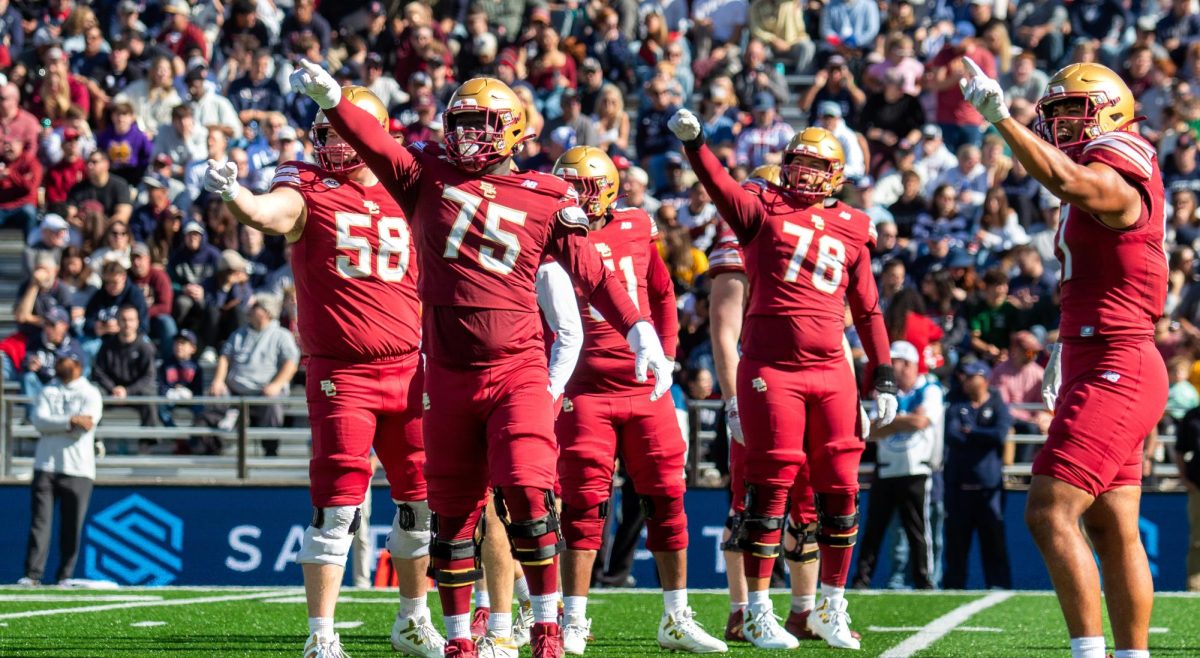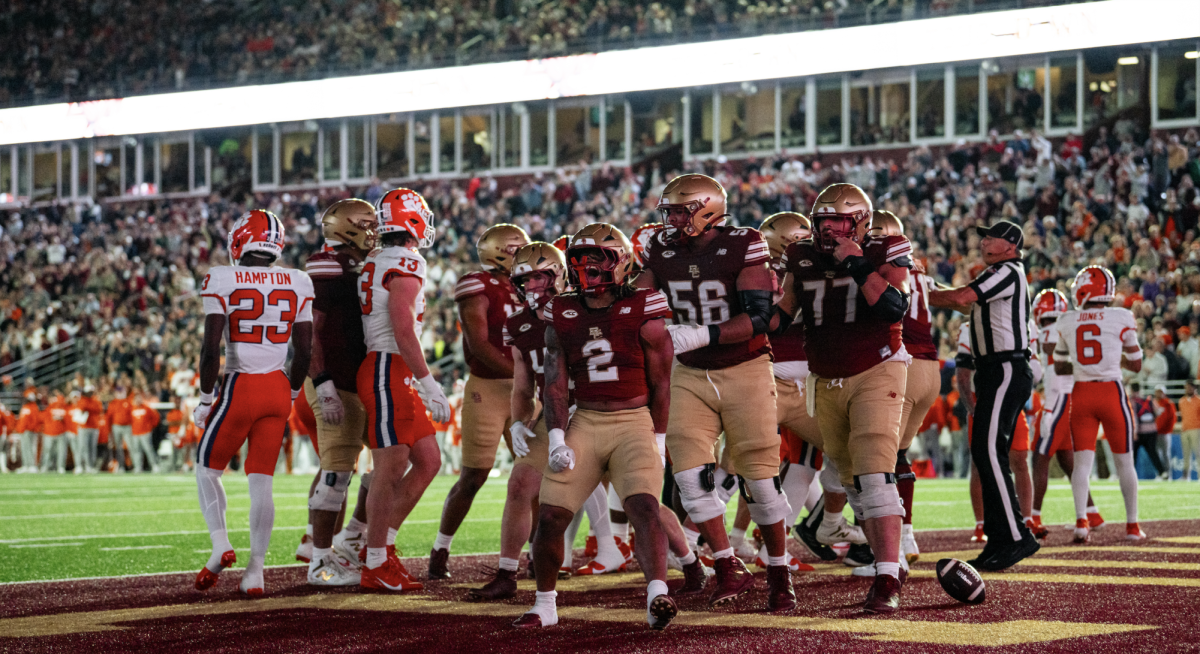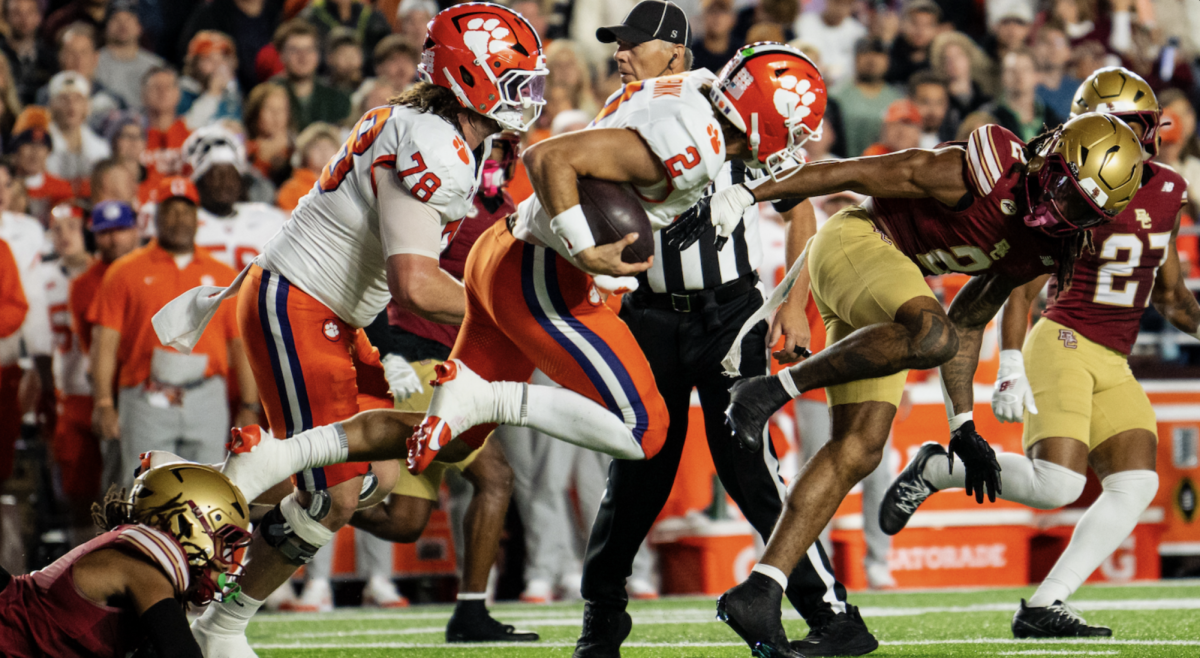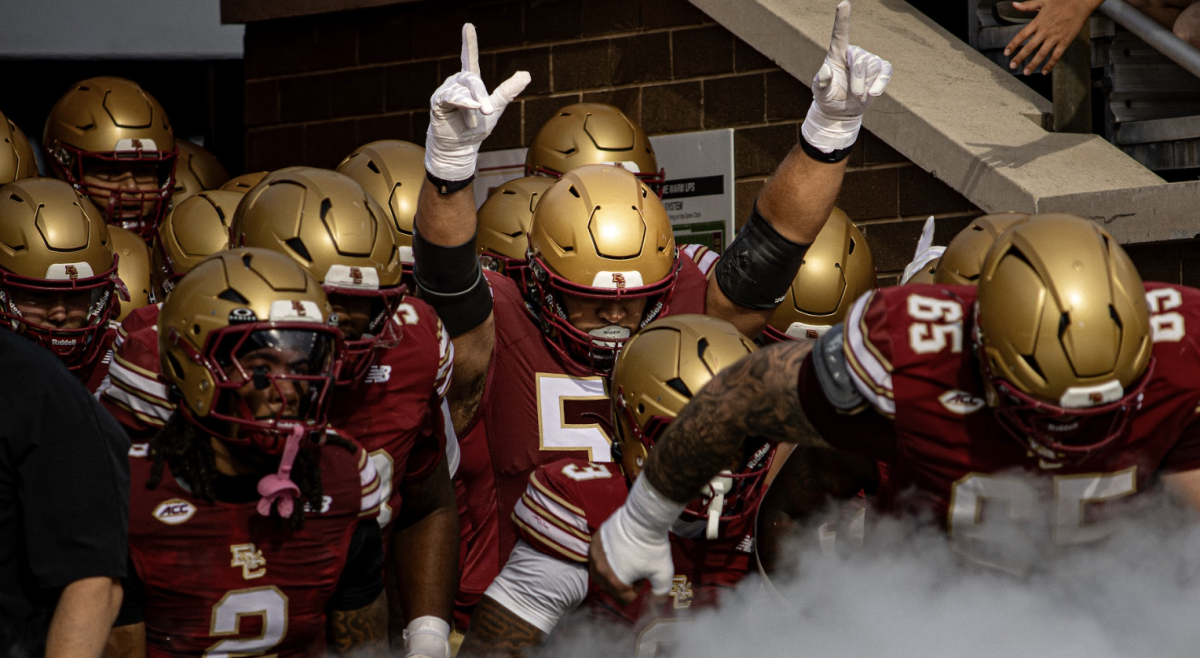When Boston College football defeated a reeling Florida State, 35-3, on Oct. 27, 2017, BC’s student section stormed the field. The celebration was slightly embarrassing—and not because the Seminoles were 2-5 at the time.
While the act itself might have looked a bit ridiculous, it was most definitely appropriate. The Eagles had just beaten FSU—a team that entered the season ranked No. 3 in the country and is routinely regarded as one of the best programs in all of college football—for the first time in eight years. Not only that, but BC’s 35 points were the most that it had ever scored against the Seminoles. Above all else, though, the lopsided victory marked the Eagles’ first ACC home win in three years.
Think about that for a second: Prior to the monumental victory, more than half of the student body had yet to see BC win a conference game in Alumni Stadium. So, it wasn’t what the students did that bothered me—rather, it’s what they were wearing when they flooded onto the turf that served as a cause for concern.
Skeletons, tigers, hotdogs, Waldo, you name it. A number of costumes made an appearance under the lights as students, eagerly awaiting Halloweekend, stormed the field and enjoyed what could easily be a defining moment of their four-year stay on the Heights. That would have been all good and fine had it not been the fourth annual Welles Crowther Red Bandanna Game—an event designed to honor Crowther, a BC lacrosse player, who died saving more than a dozen lives in the Sept. 11 World Trade Center attacks.
Personally, I have and will continue to echo former Heights sports editor Riley Overend’s 2017 column: Year in and year out, the game should be played as close to Sept. 11 as possible, in order to do the honorary event justice. But as long as it’s scheduled in October—specifically around Halloween—students have to respect the game, the red bandanna, and everything the paisley pattern stands for.
Ever since the event debuted in 2013, and the Eagles upset No. 9 Southern California, 37-31, on national television, it has been viewed as the climax of BC’s season, regardless of the team’s success—at least from the students’ perspective. For one thing, it’s a night game, a staple of college football and somewhat of a rarity at a school like BC, which is often slapped with the 12:30 p.m. start time and, before last October, had a made a home for itself at the bottom of the ACC. Perhaps even more enticing, however, is the Eagles’ level of competition. Over the course of the past four years, the game has played host to USC, FSU (twice), and Clemson. With an influx of NFL talent and an underdog narrative, the memorializing event has everything a fan could ever want.
But what makes it truly special is the iconography of the red bandanna. As documented in ESPN’s The Man in the Red Bandanna Crowther grew up donning the paisley cloth. Taking after his father, he carried it everywhere he went, even wearing it underneath his helmet on the lacrosse field. Instead of saving his own life, he repeatedly made trips back-and-forth between the South Tower of the World Trade Center, ushering civilians to safety, all while wearing his red bandanna around his nose and mouth to protect him from the surrounding smoke. His heroism is nothing short of inspiring.
On the schedule, the game is justly attributed as the football team’s Service Day, which—according to BCEagles.com—intends to honor “many groups and individuals from the BC community who epitomize the University’s mission of ‘Men and Women for Others’.”
The red bandanna itself is a symbol of service and sacrifice, as well as a reminder that, even when the odds are against you, anything is possible. That’s why the Eagles’ victory over USC back in 2013 was so fitting—that’s why the event is so powerful.
There’s a reason why BC Athletics distributes thousands of Crowther-themed bandannas to students, alumni, and fans alike. The event is only recognizable, and thereby effective, if everyone—particularly the students—participate. Sure, the players wear paisley-patterned cleats, helmets, and gloves, but they’re not the only ones on camera and, more importantly, they aren’t the sole representation of the school.
BC’s student section already pales in comparison to most ACC schools as is. It certainly doesn’t help that Alumni is the third-smallest stadium in the conference, but the school isn’t doing itself any favors by splitting the students in half, mitigated by the marching band. Showing up on time is hardly a priority. And when it comes to gameday apparel, the SuperFan shirt is sadly nothing more than an afterthought. As a result, students resort to wearing a mix of maroon, gold, and black—seemingly never the same hues. It’s neither aesthetically pleasing nor uniform. The Red Bandanna Game is supposed to be an exception to the rule.
Students might be wearing different color shirts, jerseys, and sweatshirts, but everyone has a red bandanna. When done correctly, the sea of paisley is as cohesive as any student section in the country. It’s what separates BC from other schools, not just in the ACC, but throughout the FBS.
For some reason in college, Halloween spans like eight days. I’m not complaining—free candy, amusing costumes, and a bevy of parties are all desirable. My point is, you can take one night—no, four hours—off and save the costume for the postgame, Saturday night, or the remainder of the “holiday”. The Red Bandanna Game shouldn’t have to compete with Halloweekend, because it’s all the more important.
Let’s go back to BC Athletics’ statement. The event sets out to honor those in the BC community who encapsulate the University’s mission of “Men and Women for Others.” Students should too. The Red Bandanna Game isn’t about kicking off Halloweekend on the right foot, it’s about celebrating the lives of those who have sacrificed everything for the betterment of our nation.
Leave your costume at home and wear a red bandanna on Friday night—not for me, but for Welles Remy Crowther, and everyone else who has served this country.
Featured Image by Julia Hopkins / Heights Senior Staff



















